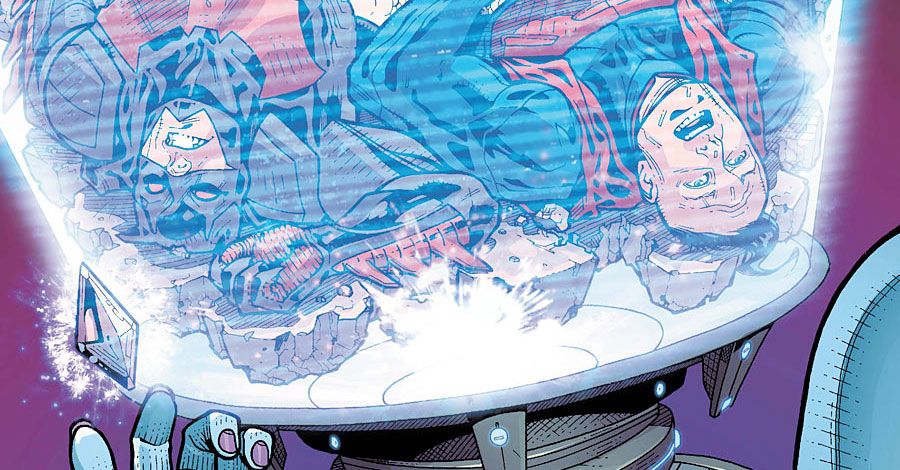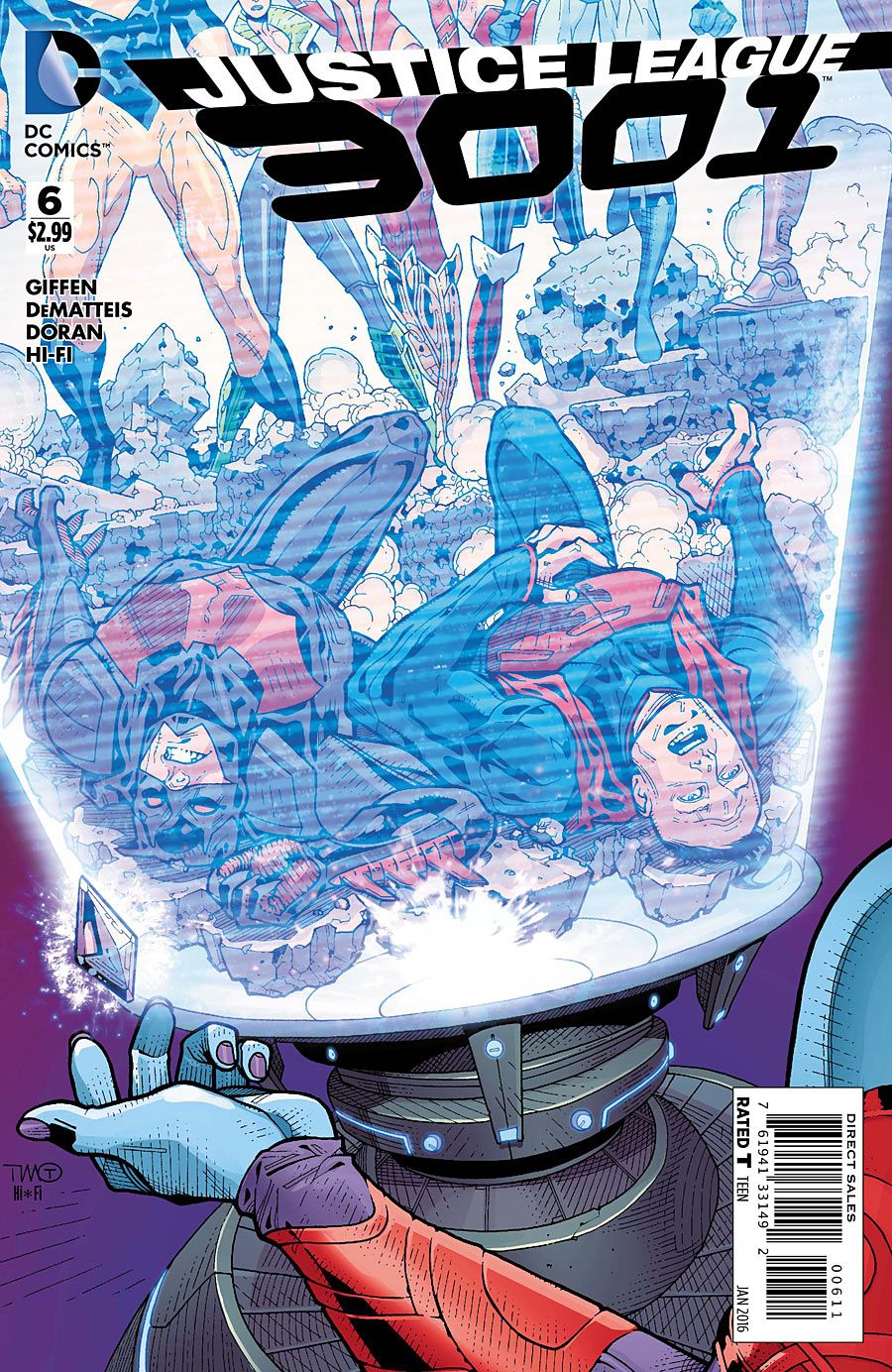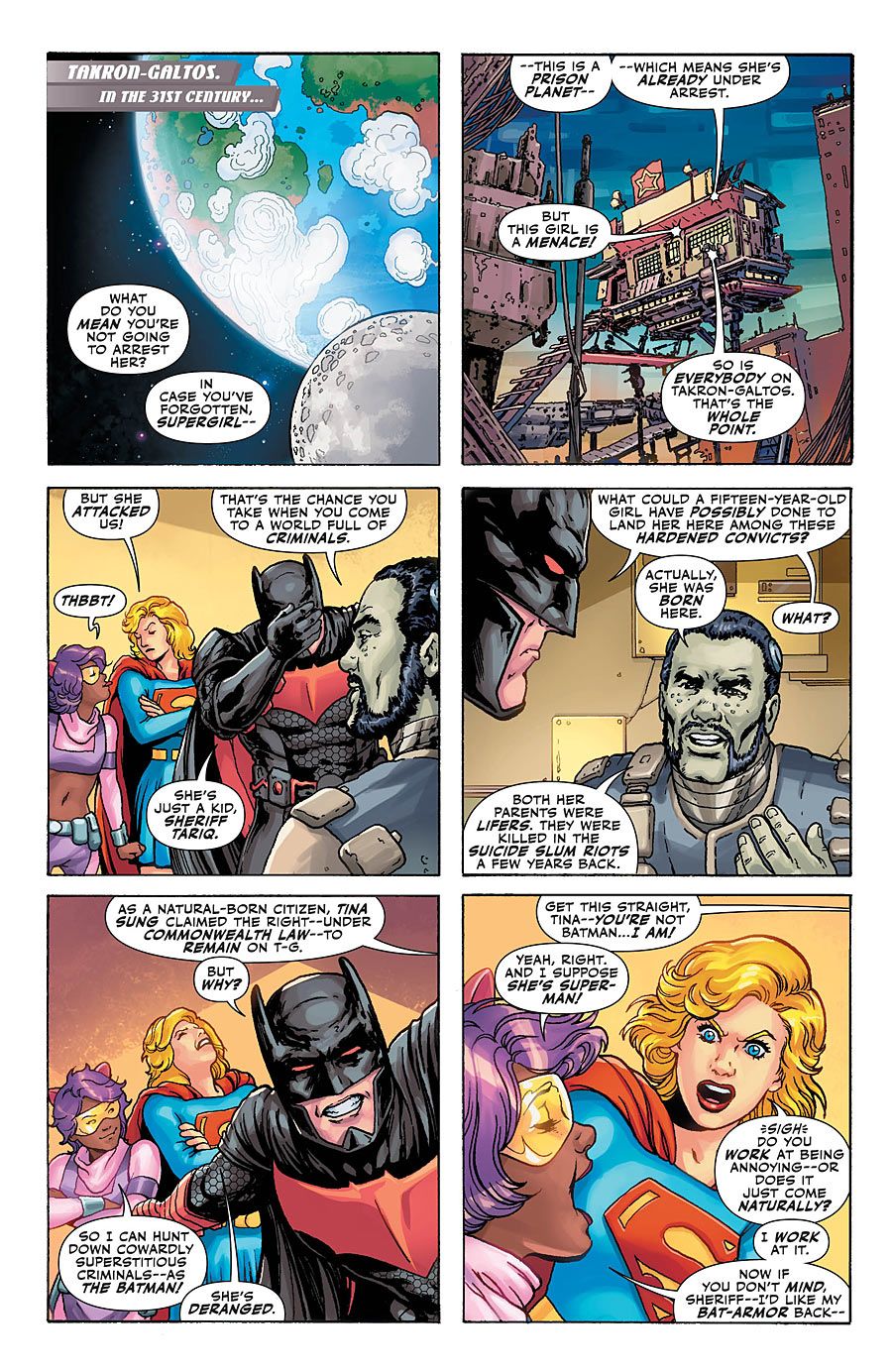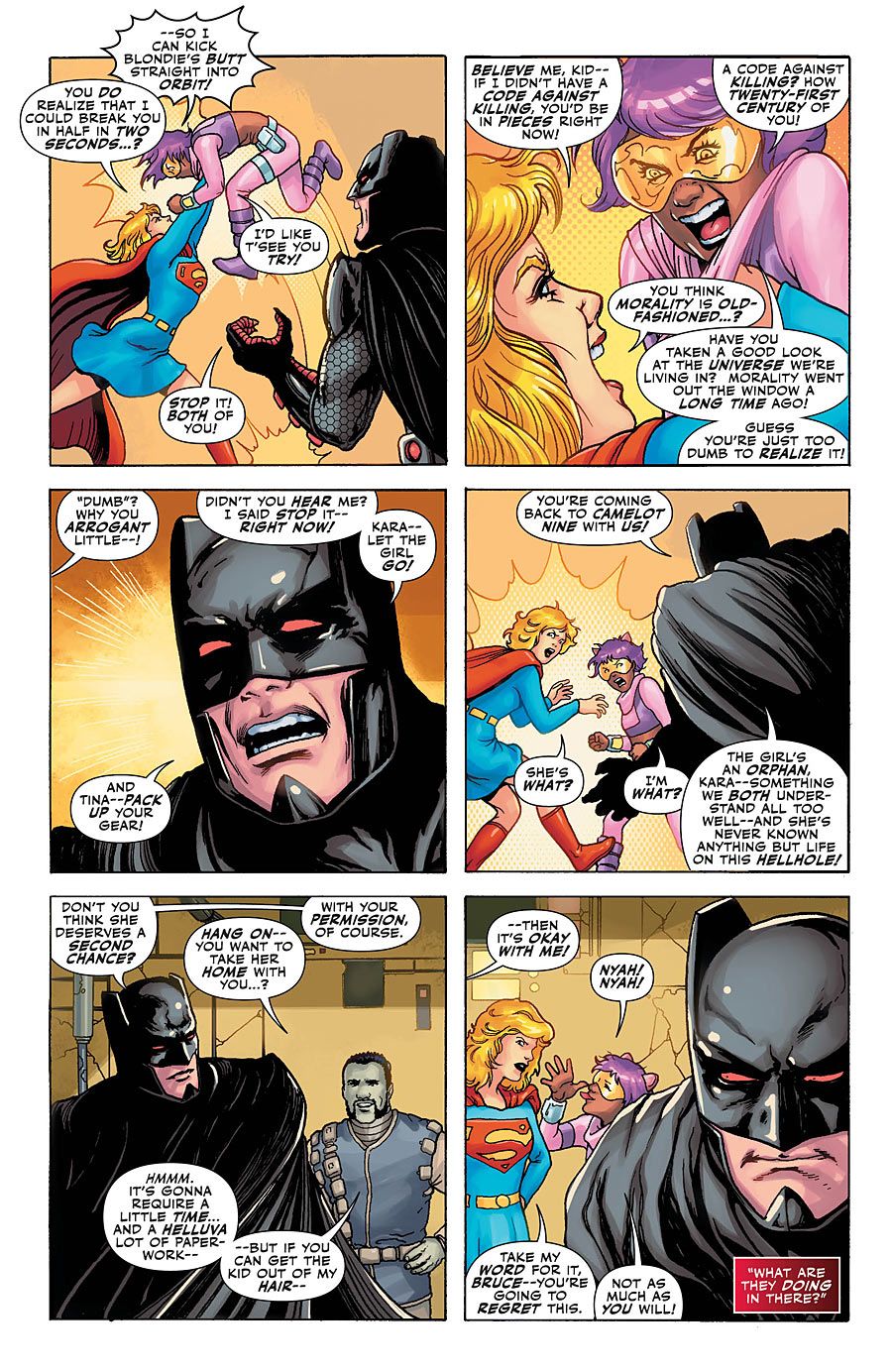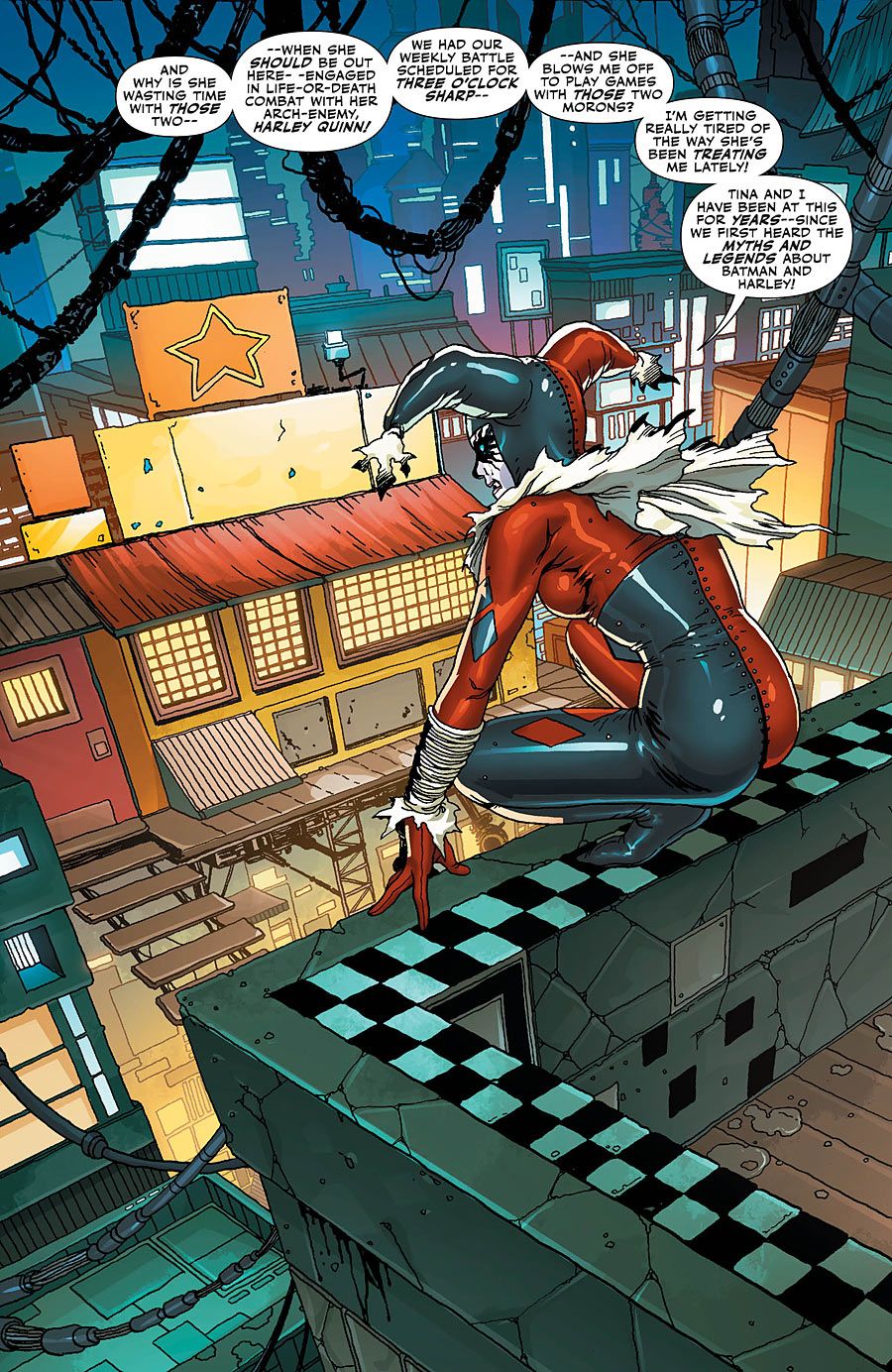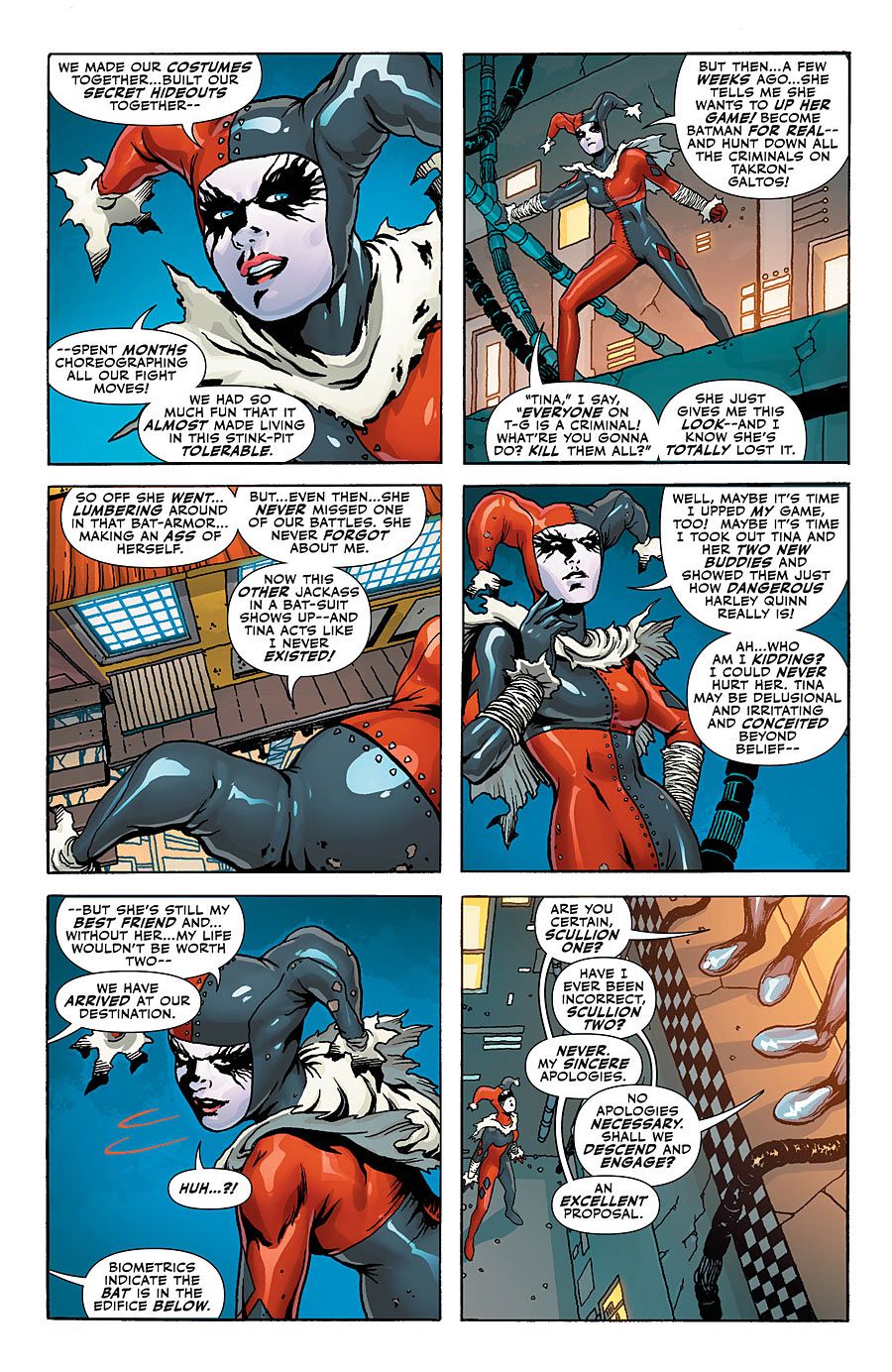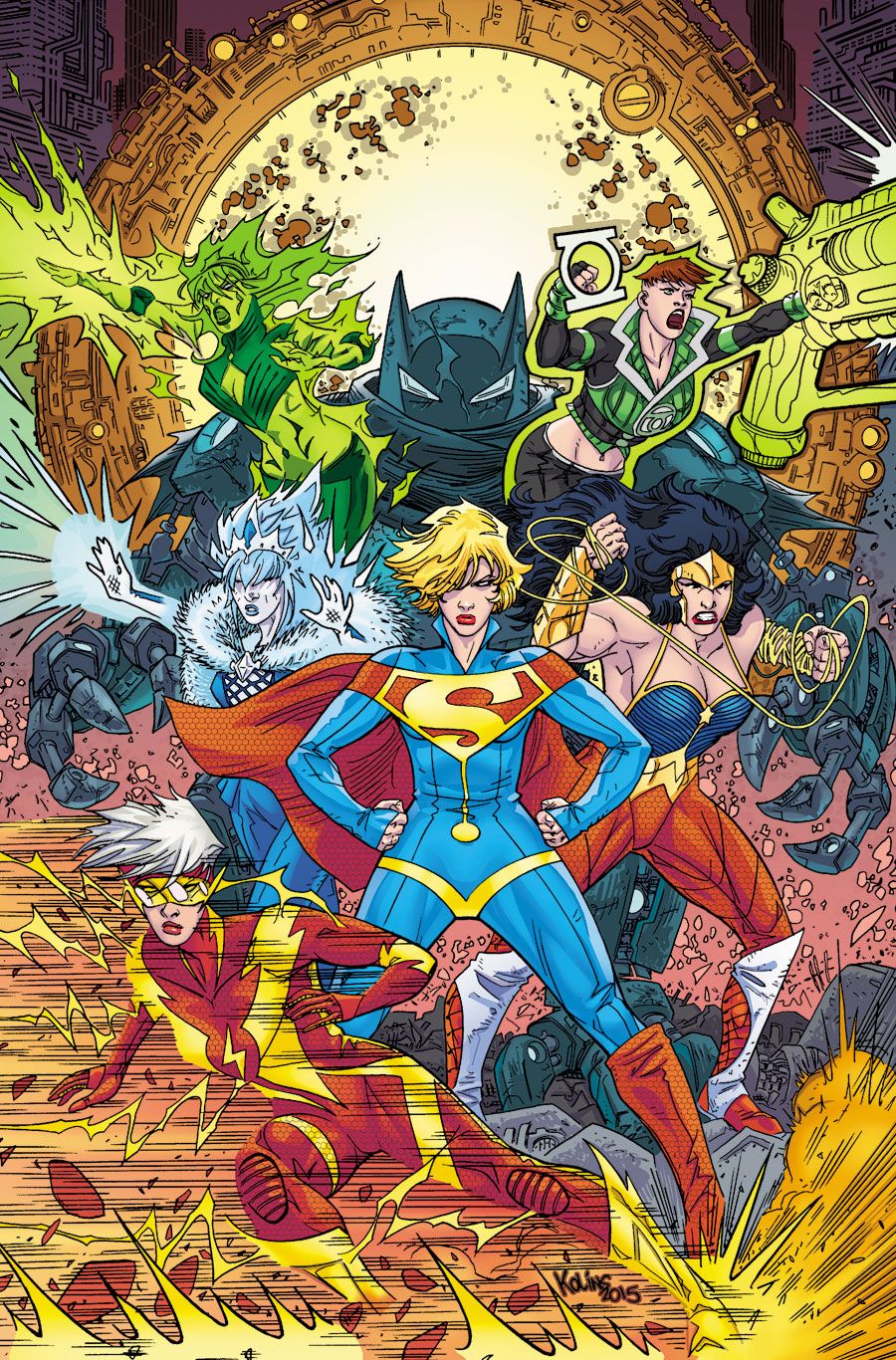Leave it to the writing team that shepherded in bwa-ha-ha to the comic book industry in the 1980s to deliver a storyline with the world's greatest heroes that features analogs of Superman, Batman, Wonder Woman, Green Lantern and The Flash that were 'born' by effectively murdering everyday citizens for their bodies. According to Keith Giffen, that's not exactly the origin of the iconic do-gooders in "Justice League 3001," his latest collaboration with J. M. DeMatteis, but it's not far from the truth.
CBR News spoke with the living legend to discuss the new series, drawn by Howard Porter and Skot Kolins, that takes place one year after the recently concluded "Justice League 3000." Giffen shared his thoughts on Supergirl's timely arrival as part of the cast -- an arrival that came just in time -- as well as the addition of Batman's great, great, great, great, great granddaughter to the storyline.
Will CBS's "Supergirl" Show Inspire a New DC Comics Title?
Giffen told CBR News that he couldn't be more pleased with the new, all-female roster, and Supergirl becoming a featured player on his team allows for insight and interjection from a real (read: not reborn in the future) DC superhero.
CBR News: I don't want to completely spoil the final pages of "Justice League 3001" #6, but it looks like Supergirl has arrived just in time -- and she has some mighty big shoes to fill on the team. Not only that, this is actually Kara, not a superhero-DNA infused person from the 4th Millennium. While super-powered and Kryptonian, what does Supergirl bring to the table that differentiates her from her significantly more famous cousin?
Keith Giffen: Basically, this is the Kara that Marc [co-writer J. M. DeMatteis] and I like the best. By the way, Supergirl showing up on "Justice League 3001" and her TV show taking off is purely coincidental. We didn't even know there was a Supergirl show being planned when we introduced her into this storyline. This is just one of those weird coincidences. I know people are going to read into it but it doesn't mean anything.
I have always been a fan of the Supergirl that you see on the cover of her first appearance ["Action Comics" #252 (May 1959)]. She has a pleated skirt, she is flying through the air and she's saying, "It's me, Supergirl! And I have all of your powers!" When we were going to use Supergirl in the story, I wanted to make her as close to that first appearance as humanly possible. You'll notice that a lot of characters are coming into the book and they are kind of familiar but they are kind of not. It's just the way that Marc and I like to gather people and put them in a room and see what eventually happens to them.
Let me put it this way. Back in "Justice League 3000," we had no intention of making Teri the Flash. That was never a long-term plan. I like working like that. I like the fact that sometimes I can finish an issue and get it to Marc and then get the dialogue back and I can be surprised by what we did. It keeps the book interesting. I figure, if I can surprise Marc or even surprise myself, that's half the battle. I can say, "Good. I'm doing my job."
And going back to Supergirl, she's a character that I really like and I thought to myself, let's bring back a Kryptonian with a full array of powers and let her bounce off against this big, heavy jerk of a Superman that we've got that's only got partial powers. Let's see what happens. And of course, as happens to characters, she works better with Batman than Superman. That's one of things about doing team books like "Justice League 3001." You introduce Robin and he obviously starts with Batman but he slowly gravitates toward Superman. That to me is really interesting because then you are truly exploring the characters. It's very cliche to say that the characters write themselves. They don't. But the life we give them does tend to move in some really interesting directions.
You mentioned Supergirl's instant connection but this series, it appears, is about to get a new Batman, too. You've introduced Tina Sung -- a teenage girl fighting crime in a superheavy robotic Bat-suit -- as the great, great, great, great, great granddaughter of Bruce Wayne and we learn quickly that like Kara and Bruce, Tina is also an orphan. What is it about childhood tragedy that works so well as a spark to develop a comic book superhero?
All heroes, at least the ones that last, are born out of overcoming tragedy. Superman lost his entire world. He's the last son of Krypton. Batman was driven into this compulsive behavior after watching his parents get slaughtered in Crime Alley when he was just a boy. Peter Parker couldn't save his Uncle Ben from being shot. Even the Fantastic Four, which was originally a fun, family book, started with them going into outer space and coming back as freaks. All heroes have to overcome something. And with our book, we've established that our heroes had their own DNA overwritten as test subjects and what we're slowly unfolding, little by little by little, is that not all of those test subjects were willing participants.
To be really radical about it, you can say that in our book, Superman was born by murdering the person that he was. It's not true [Laughs] but when I think about how they came to be, even though they are heroes and they are saving people, it's kind of a creepy origin. And we're using Guy Gardner to explore that right now.
And again, by bringing in Supergirl from Krypton, who comes in pure and has the full power-set, she has that weird mindset that most superheroes have, which is if there is a job that needs to be done, let's do it! And our Supergirl is that kind of hero. She's hard-headed and she's constantly bumping against 30th Century tradition. She tries to take out Starro and it turns out that he's their legitimate leader.
Supergirl was brought in almost as a way of getting a real DC comic book superhero's outlook on what's going on with the Justice League in the year 3001. And she is not impressed with what's going on because they seem so bound by red tape. And she'll probably stay that way. I can't see her being the kind of character that bends and comes onboard. She'll stay as the firebrand in the book because they'll have to throw me off the book first because I like her so much as a character.
You've been teasing that an all-female version of the Justice League is coming to the series and with Kara, Tina Sung, Teri as the Flash, Guy Gardner's DNA in a woman and of course, Wonder Woman, we're they're. Does an all-female roster change the dynamic or is it distinct characters, regardless of sex, that drives story?
No, not really. When I realized that we were going to go with an all-female team and try that for a while, I thought to myself, 'how should I adjust this,' but I quickly realized that I don't have to adjust it. They're already interacting with each other. We're just adding a few more characters and we're going to continue the same kind of interactions. If you are in a foxhole and somebody is shooting at you, it doesn't matter if you are a guy or a girl, you're going to have the same reaction. [Laughs] And to be honest, we were heading that way any way because Batman and Superman were the only two male characters. And Batman doesn't even want to be Batman any more. It was just a matter of time. And now we have Supergirl and Tina, Bruce Wayne's descendent, so we will see in the next couple of issues how the team becomes an all-female team or what pushes them to become an all-female team.
And if it works, we'll stick with it. But we're not tied to it. If it turns out that everybody hates it -- not an all-female team but my approach to an all-female team -- and that's what it comes down to, we can usher in new characters or go back to what we were doing. Or try something else. That's the cool thing about comics, we're still a business that can turn on dime. We don't have to wait a year to get the movie out. It if it doesn't work, we can fix it right away. That's part of the fun -- and you wouldn't believe the amount of fixes Marc and I have to do on "Justice League 3001." [Laughs]
Finally, with an all-female team, I suppose it makes a sort of sense that you have a female supervillain. I love what you're doing with Lois Lane and her host, ex-Cadmus scientist Ariel Masters. Lois Lane is as iconic a supporting character as you will find in comics, and has long been the foundation or even home base for Superman. You talked about turning on a dime, and an evil Lois Lane that is hell-bent on destroying Superman is about as swift a turn as you can get.
You're right. This Lois Lane not only hates Superman, she wants to kill him. And now she's back. We have big plans for Lois Lane, really big plans. It's great to see people's reaction to a familiar face or a familiar character handled in unfamiliar ways. I could drop you into any country on Earth and if you asked the first five people that you met if they knew Lois Lane, four would know who she is. She is part of the pop cultural landscape. To bring her into the story and twist her a little bit and make her the primary villain, we get to have some fun. [Laughs] She's a big part of the book and she's not going anywhere anytime soon.
We'll see what happens with her. I honestly don't know where her story ends. She might join the Justice League as a character that you can't really trust or she might be like a Doctor Doom character where you can only trust her some of the time. The book is wide open because when the book switches over to the all-female team, even though it's "Justice League 3001" #8, we're treating it like a first issue. We'll re-introduce the characters. We won't bore the readers that have been with us for a long time, they've find it interesting too, but for new readers, who want to find out what these guys are doing, it's an easy time to slide in. You won't have to read the Wikipedia page. [Laughs] Which is good because half of that stuff isn't true.
"Justice League 3001" #6 by Keith Giffen, J. M. DeMatteis & Howard Porter is on sale now.

